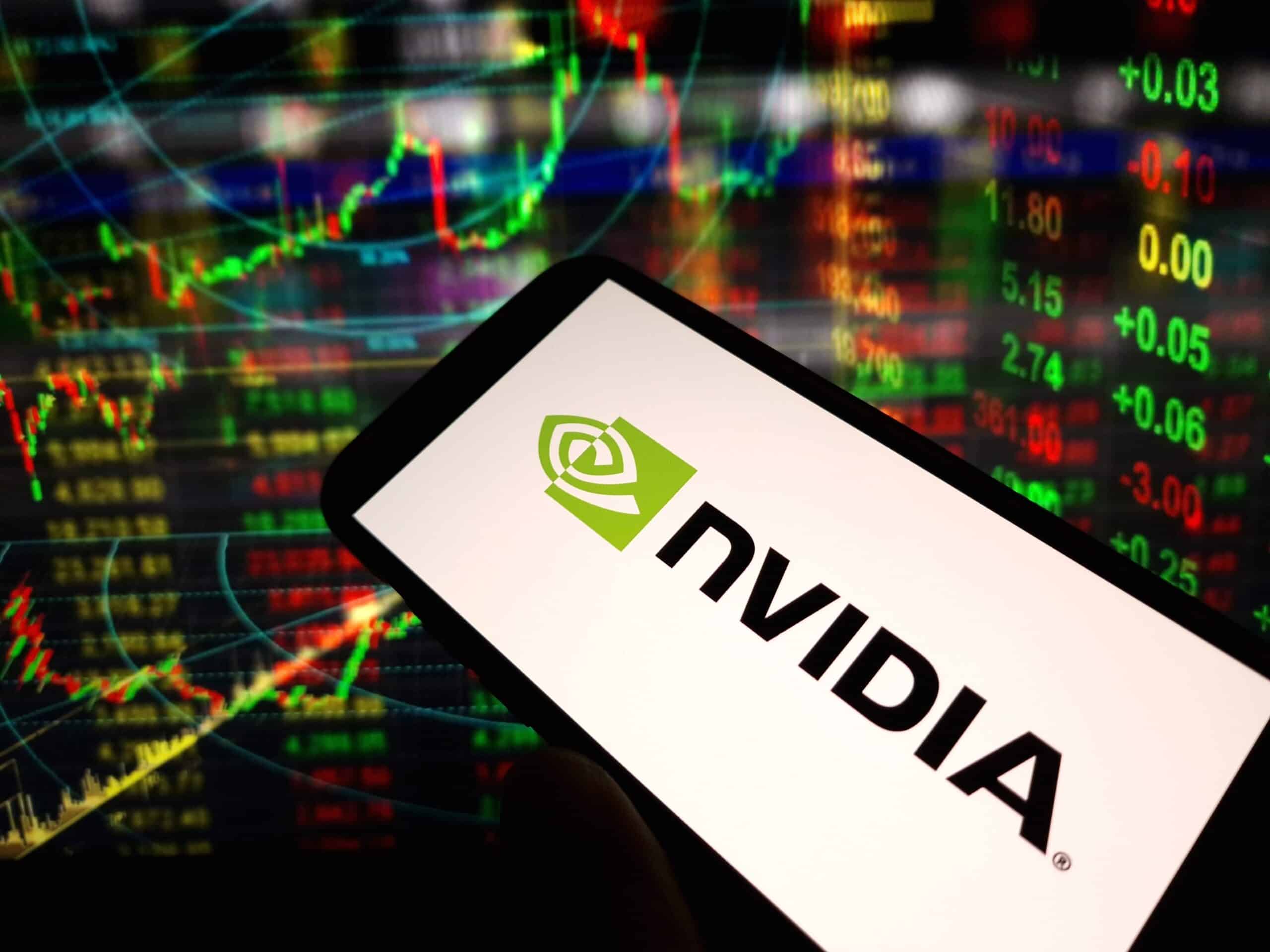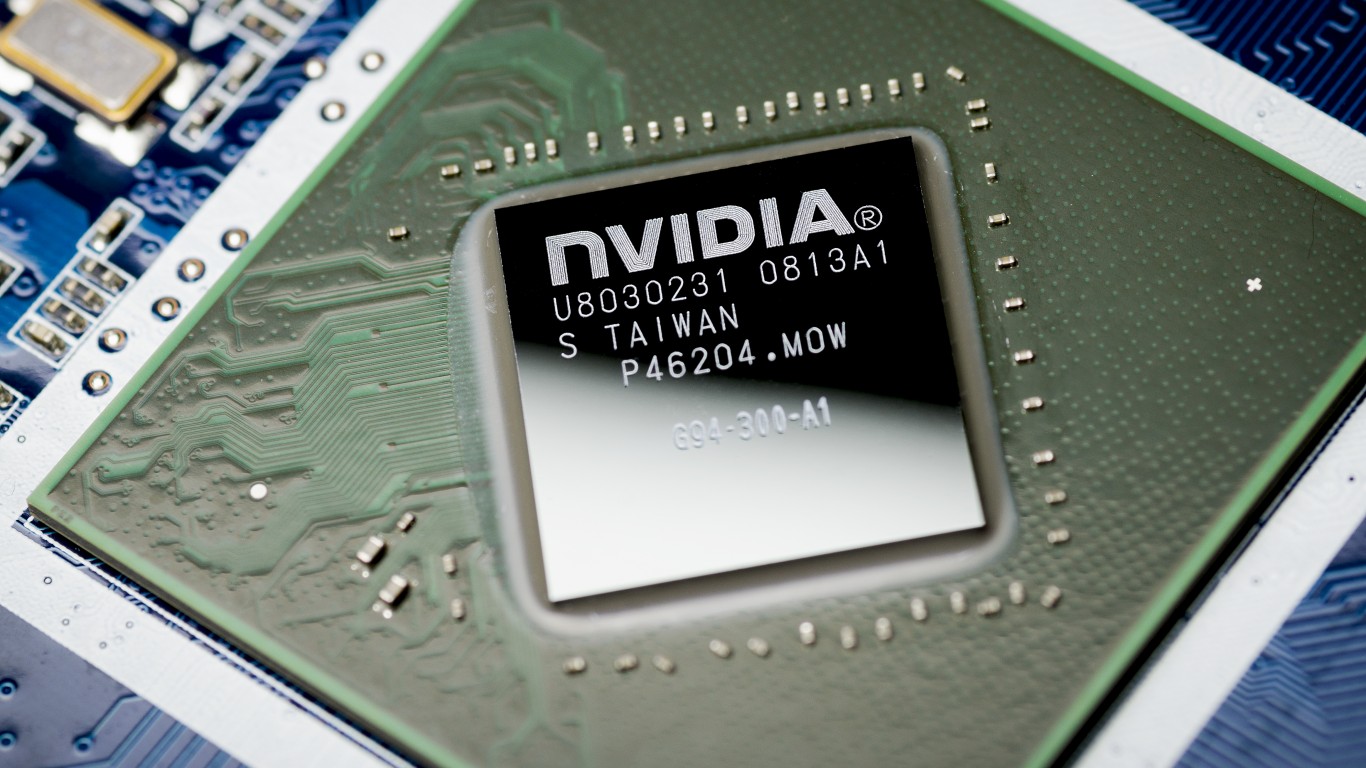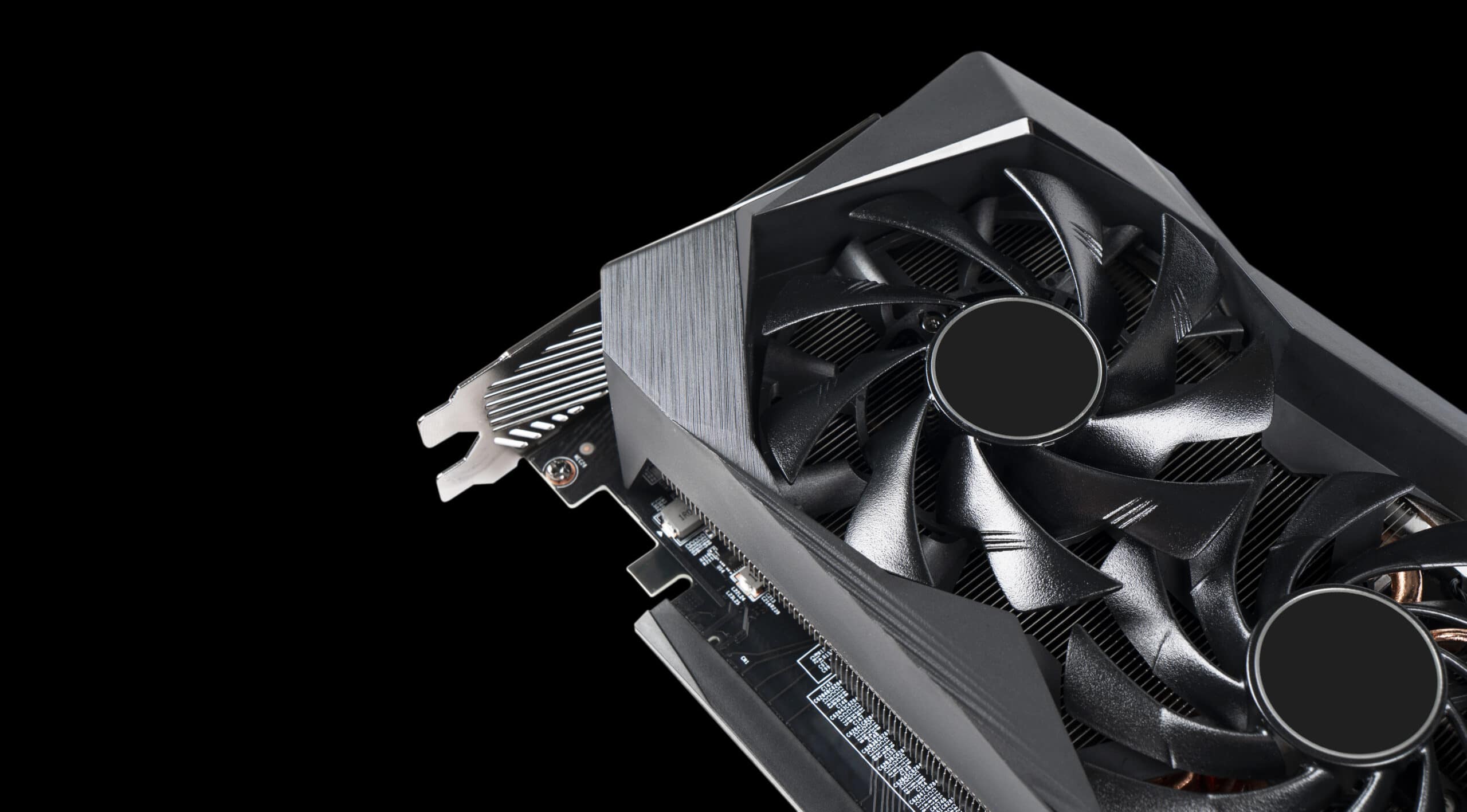
Yes, I believe NVIDIA (Nasdaq: NVDA) is likely to hit $150 per share by the end of the year, and I don’t think it’s really a sign of froth, either.
Rather, I’ll display below why the numbers support NVIDIA continuing to head higher and why its recent share price gains more reflect Wall Street fully appreciating just how much money the company is going to make in the coming years than any “speculative mania.”
For those in a hurry, here’s a very fast rundown of this article:
- NVIDIA is experiencing explosive revenue and profit growth, far surpassing industry peers like Tesla, Meta, and Apple. This exceptional performance is driven by the increasing demand for AI technologies.
- NVIDIA is a leader in AI chips because of its advanced technology and comprehensive platform. Despite competition from AMD and others, NVIDIA’s innovation and adaptability put it in a good position for future success.
- NVIDIA’s premium valuation is justified by its robust financial performance and growth prospects. With increasing demand for AI and high-performance computing, the company is well-positioned to achieve significant stock price appreciation, potentially reaching $150 per share.
- Of course, other companies could benefit heavily from all the same factors that NVIDIA is taking advantage of. For a deeper look at the industry, read our free report, “The Next NVIDIA.”
NVIDIA’s Unparalleled Financial Performance

NVIDIA’s recent financial performance has been nothing short of extraordinary, which is a huge reason I think the stock will only continue to climb. NVIDIA boasts a staggering 262.0% revenue growth, significantly surpassing all the other companies listed. Similarly, NVIDIA’s profit growth sits at an impressive 628.0%.
To truly understand how amazing this is, though, let’s compare it to a few other popular stocks:
| Company | Revenue Growth (%) | Profit Growth (%) |
| NVIDIA | 262.0 | 628.0 |
| Tesla | 145.0 | 19.2 |
| Meta | 72.0 | 193.0 |
| Alphabet | 62.0 | 166.0 |
| Apple | 54.0 | 110.0 |
| Amazon | 43.8 | 220.0 |
These figures paint a clear picture: NVIDIA is experiencing a growth surge unlike anything seen by its peers in recent times. This exceptional performance has serious implications for its stock growth. Plus, it’s also attracted a lot of investor attention, potentially driving the stock prices even higher.
The Role of AI in NVIDIA’s Growth

So, why is NVIDIA growing so much? And what makes us think this growth will continue in the future?
Artificial intelligence has rapidly evolved over the last few years. Once a futuristic concept, it’s now a transformative force across all industries. From healthcare and finance to manufacturing and transportation, AI is revolutionizing operations and creating new opportunities.
NVIDIA is naturally positioned to take advantage of this growth. The company’s GPUs may have traditionally been designed to render visuals. They allow your computer to show the graphics. However, they’re also very good at handling complex calculations, which is exactly what’s required for AI tasks.
NVIDIA’s GPUs are already used for more than rendering graphics. Now, it’s likely that their chip will be used for even more.
NVIDIA will likely benefit massively from the AI revolution without needing to make huge strides themselves. NVIDIA’s processors are already used to run AI.
Dispelling the Bear Case

For some time, skeptics argued that NVIDIA’s meteoric rise was unsustainable. Concerns centered around the fear of a cyclical downturn in the semiconductor industry, potential competition from other chipmakers, and the possibility of AI hype outpacing reality. Simply put, there are many theories about where NVIDIA might go wrong.
However, NVIDIA’s earnings keep performing well, silencing critics. For the last several years, some analysts have been calling for NVIDIA’s doom. But it has yet to happen, and we aren’t particularly convinced that it will.
The company’s consistent outperformance of analyst expectations and the expansion of its market share have demonstrated the resilience and durability of its business model. The robust demand for high-performance computing and GPUs is only expected to rise as the world becomes more and more dependent on complicated technology (including AI).
NVIDIA is set to gain ground, not lose it.
Of course, there is one area where critics may have some truth – competitors.
The Competitive Landscape

While NVIDIA currently dominates the chip market, that doesn’t mean they’ll always dominate the chip market. There is a good chance that another competitor will come along eventually and put NVIDIA to the test. Already, there are several key players vying for a share of NVIDIA’s market.
1. AMD’s Growth

AMD (Nasdaq: AMD) has emerged as NVIDIA’s primary competitor in the high-performance GPU market. Already, AMD has shifted slightly to focus on AI accelerators, like the MI3000 chip, which has potentially positioned them to be a serious challenger.
AMD’s increased investments in research and development may also prove to be a problem for NVIDIA if they advance their technology at a faster rate.
The big benefit AMD currently has is its aggressive pricing strategy. Many of their chips are much cheaper than NVIDIA’s, which is an obvious problem to NVIDIA’s market dominance.
2. Arista Networks

The rise of AI has also highlighted the critical role of networking infrastructure. Companies like Arista Networks (NYSE: ANET) are capitalizing on this trend by providing high-performance networking solutions for AI data centers.
While Arista isn’t currently a direct competitor to NVIDIA, Arista’s success is closely linked to the AI market. There is a chance Arista could use its current position to expand further into the AI market and challenge NVIDIA’s dominance.
3. Microsoft’s Role in AI

Microsoft (Nasdaq: MSFT) is a massive company that also has serious investments in AI. While not a direct hardware competitor to NVIDIA, Microsoft’s influence in the AI ecosystem cannot be ignored. The company’s Azure platform and it’s integrated AI development tools could impact NVIDIA’s market share, especially when it comes to the enterprise segment.
That said, many people believe that NVIDIA will outgrow Microsoft as the world’s most valuable company.
NVIDIA’s Valuation and Price Target

So, here’s my prediction: NVIDIA’s stock price will likely hit $150 (post-split) before the year is over, and I’ll present the numbers why I believe this is the case below. Largely, this is because of NVIDIA’s record growth despite having so many potential competitors, as we discussed above.
NVIDIA currently trades at a premium valuation relative to its tech peers. Despite commanding a higher price-to-earnings (P/E) ratio, the company’s projected growth rate significantly outpaces its competitors. Just scroll back up and look at our graph on NVIDIA’s earnings!
The fact that NVIDIA is making much more than its competitors (and growing much faster) indicates that it should be traded at a higher amount, but this isn’t the case!
Given the company’s robust financial performance and the burgeoning demand for its AI-powered solutions, it’s reasonable to expect NVIDIA’s valuation multiple to expand. The stock price could rapidly appreciate if this occurs concurrently with upward revisions to earnings estimates.
For instance, if NVIDIA’s earnings per share (EPS) for the next year surpass expectations and reach $4.25, coupled with a P/E multiple expansion to 35x, the stock price could easily climb to $150. This scenario is plausible considering the overwhelming demand for NVIDIA’s high-performance computing (HPC) and gaming GPUs, as well as the burgeoning adoption of its AI platforms.
As we’ve discussed, the industries NVIDIA is in are only expected to grow, which puts them in a position to grow big without making huge changes to their offerings.
Simply put, other companies have to beat NVIDIA. NVIDIA only has to stay ahead.
An important contributing factor to this potential growth lies in the exceptional demand for NVIDIA’s GB200 systems. These integrated platforms combine networking and GPU capabilities and are sold at premium prices of up to $3 million per unit.
While the media often emphasizes the high prices of individual GPUs, the true value lies in the overall system sales, which are cementing NVIDIA’s dominance in the market.
Thank you for reading! Have some feedback for us?
Contact the 24/7 Wall St. editorial team.




